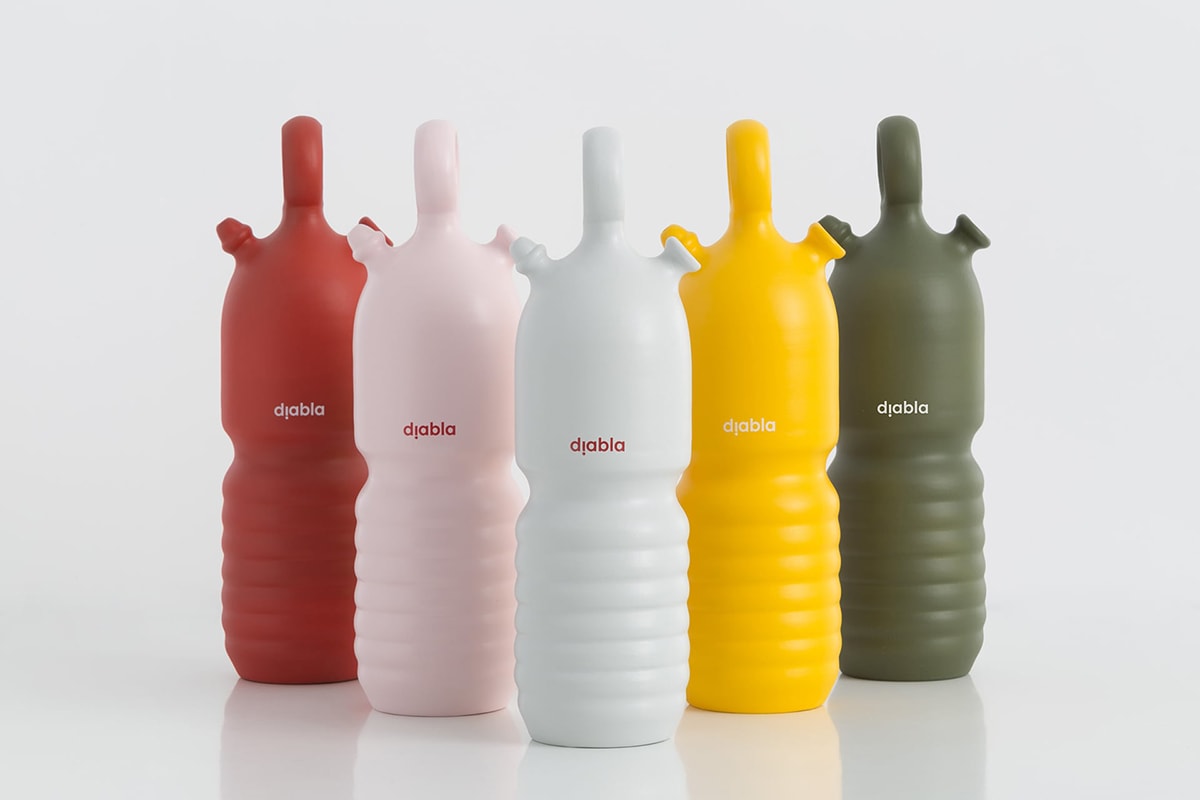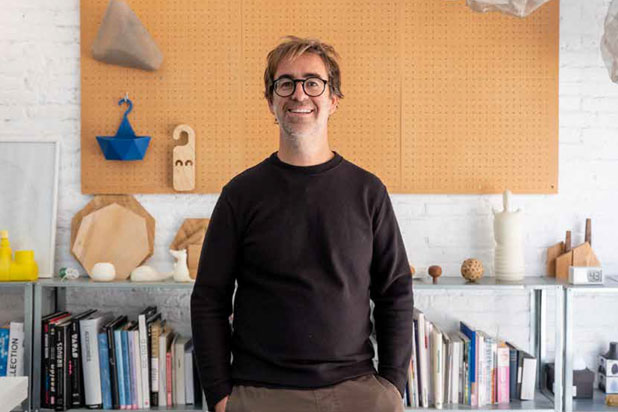Among the pieces in the ‘Identity and Territory’ axis of ‘From Spain With Design’ we find La Siesta, a work by Héctor Serrano, Alberto Martínez and Racky Martínez. It is a terracotta pot that can be used as a bottle or a jar and combines the appearance of the plastic water bottle and the traditional botijo with the quality of keeping water cold even in direct sunlight.
Héctor Serrano, from Valencia, is one of its three authors and we spoke to him.

What was the starting point for creating this product and what inspired you?
The project emerged while we were studying at the Royal College of Art in London; it was in a conversation where the three of us talked about tradition versus contemporaneity, about how people drank water in the past and how it is done today. We thought why not mix something totally opposite and that shares functionality. In a way, La Siesta was born as a metaphor for our own experience of moving from Spain to live and study in London.
What was the creation process and selecting the materials like?
The process was very fast, in a few minutes we drew the first sketch and within a few days, we turned the first prototype in wood. Later on, we commissioned a ceramics student at the Royal College to make the first prototype in terracotta. We exhibited it in Milan but it attracted little attention. At the end of the Master, we had to exhibit our projects and we decided to make a small production of 30 units that we sold and gave away. The project went unnoticed up to this point; it was nothing more than a curious bottle.
A few months later we contacted Silvia García, design director of La Mediterránea. She believed in the project and the brand began to mass produce it. La Mediterránea produced it for several years until it was finally discontinued. It was then that José A. Gandia-Blasco discovered it was no longer in production and decided to rescue and relaunch it. Now, thanks to Gandia-Blasco, La siesta is still available. We could not think of a better brand for our product.
¿Implicó algún desafío de diseño y/o producción?
El reto era ser fiel a la idea de fusión, haciéndolo de una forma equilibrada para que se entendiese la idea de forma natural y sencilla, que el objeto hablase por sí mismo pero sin chillar. Intentamos hacer la menor intervención posible al darle forma, fijándonos en las características icónicas de los dos objetos y extrapolándolas al nuevo. En cierta manera se trataba de intervenir lo menos posible una vez la idea surgió, la forma fue casi fue instantánea.
In the Identity and Territory axis, we selected pieces that have to do with the diversity of Spain. Do you consider that La Siesta can be identified with a specific territory? In what way?
I believe that the botijo is a typical Spanish object that can be identified with the whole territory and represents the Mediterranean culture very well. Although it is true that it is more common in the centre, south and east of Spain and where you can find more artisans and manufacturers.
From Spain with Design is a tool for the projection of Spanish design in our country and beyond our borders. With your experience, after a decade working in London and now working from your native Valencia, what kind of shape do you think Spanish design is in and what needs to be “trained” more?
I was recently at the Milan fair and there you could appreciate the excellent state of Spanish design, both companies and designers. I think the Spanish design scene is very eclectic and perhaps this makes it difficult to classify. Obviously, there is always room for improvement, we have to continue to innovate in all senses so we are not only at the level of any other country but ahead.
Have you had the chance to see the exhibition? What did you think of it and what would you highlight?
I have not been able to see it personally but from what I have seen and read in the media it seems to me to be a very good representation of the diversity and richness of Spanish design.




